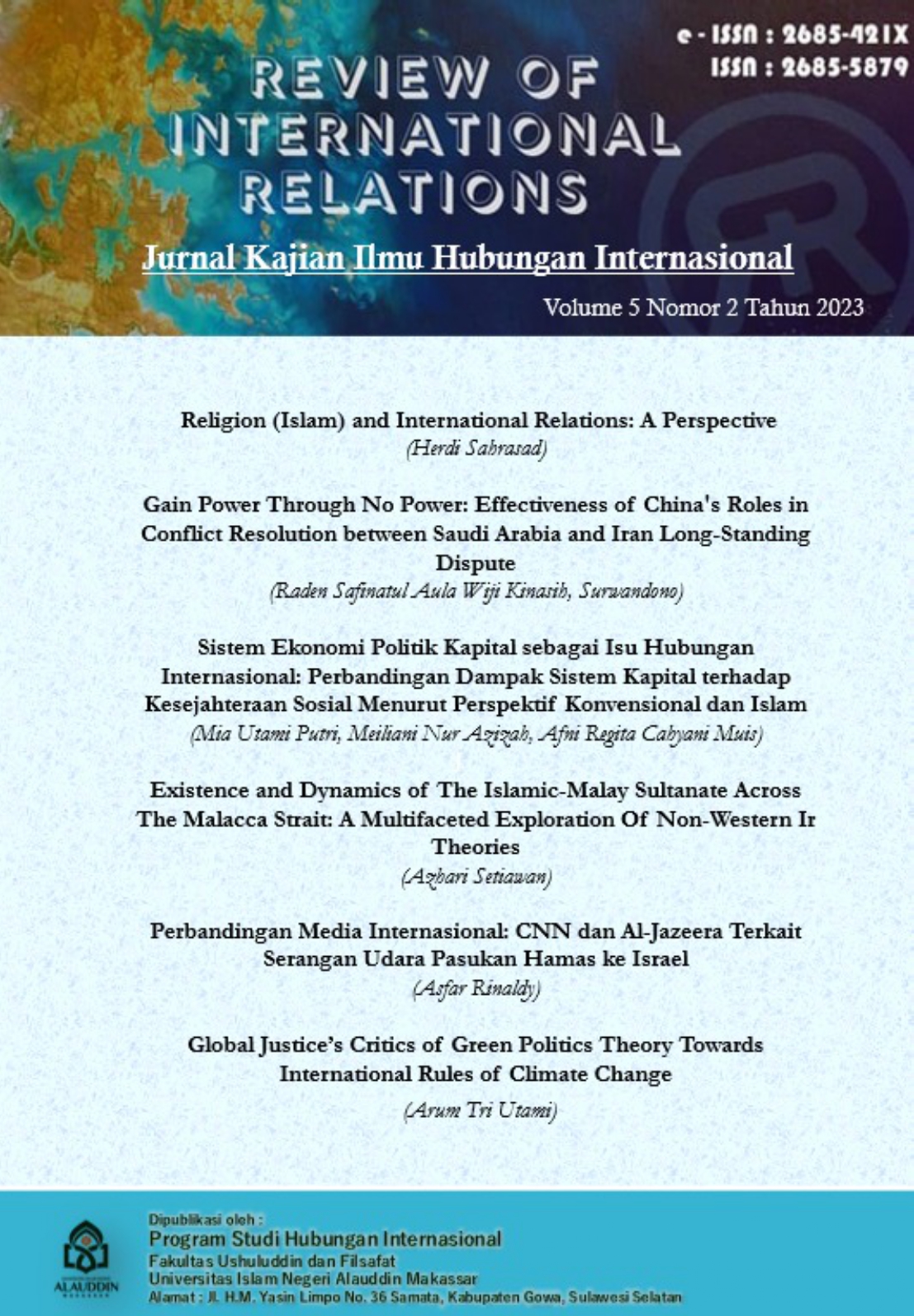Gain Power Through No Power: Effectiveness of China's Roles in Conflict Resolution between Saudi Arabia and Iran Long-Standing Dispute
Abstract
This research will discuss about the role of China as a conflict resolver between Saudi Arabia and Iran that just happened in March 2023. The two Gulf states decided to work toward settling their differences in accordance with a set of international principles and two bilateral agreements reached in 1998 and 2001 after seven years of military and diplomatic animosity. A deal to restore diplomatic ties between Riyadh and Tehran was announced in a joint statement by Saudi Arabia, Iran, and China on March 10 and Beijing become the place these intense negotiations take place. This shows how big China roles and influence in the middle east, thus bringing the researcher to a question what strategy they used. This research uses qualitative research method by collecting data from former journal and research. This research found that China goal behind taking the role is to strengthen their stances through soft balancing strategy. Thus, this research will explain more about the strategy and the use of China diplomacy approach that compliment it, making it possible for China to gain power without exerting one at all.
Downloads
References
Bandow, D. (2023, April 4). China Plays Mideast Statesman, Reduces Tensions between Iran and Saudi Arabia | Cato Institute. CATO Institute. https://www.cato.org/commentary/china-plays-mideast-statesman-reduces-tensions-between-iran-saudi-arabia
Batrawy, A. (2023). Rivals Saudi Arabia and Iran restore ties, with China’s help. Here’s why it matters. NPR. https://www.npr.org/2023/03/10/1162562242/saudi-arabia-iran-relations-china-analysis
Baycar, H. (2023, May 18). China-U.S. Rivalry Enters a New Phase in the Middle East - Carnegie Endowment for International Peace. Carnegie Endowment For International Peace. https://carnegieendowment.org/sada/89789
EIA. (2015). China: International Energy Data and Analysis. Energy Information Administration (EIA) of the US. https://www.eia.gov/international/analysis/country/CHN
Gill, S. (n.d.). China’s Soft Balancing 121 CHINA’S SOFT BALANCING STRATEGY AND THE ROLE OF RESOURCE INVESTMENT.
International Crisis Group. (2023, March 17). How Beijing Helped Riyadh and Tehran Reach a Detente | Crisis Group. International Crisis Group. https://www.crisisgroup.org/middle-east-north-africa-saudi-arabia-iran-china/how-beijing-helped-riyadh-and-tehran-reach-detente
Kurlantzick, J. (2007). Charm offensive: How China’s soft power is transforming the world. In Charm Offensive: How China’s Soft Power Is Transforming the World. https://doi.org/10.5860/choice.45-2865
Lasswell, H. (1965). World Politics and Personal Insecurity.
Ministry of Foreign Affairs of the People’s Republic of China. (2023). Joint Trilateral Statement by the People’s Republic of China, the Kingdom of Saudi Arabia, and the Islamic Republic of Iran. Ministry of Foreign Affairs of the People’s Republic of China. https://www.fmprc.gov.cn/eng/wjdt_665385/2649_665393/202303/t20230311_11039241.html
Rome, H., & Rumley, G. (2023). What Beijing’s Iran-Saudi Deal Means—and What It Doesn’t. The Washington Institute. https://www.washingtoninstitute.org/policy-analysis/what-beijings-iran-saudi-deal-means-and-what-it-doesnt
Sheehan, M. (1996). The balance of power: history and theory. In Choice Reviews Online (Vol. 34, Issue 01). https://doi.org/10.5860/choice.34-0573
Copyright (c) 2023 Raden Safinatul Aula Wiji Kinasih, Surwandono

This work is licensed under a Creative Commons Attribution-ShareAlike 4.0 International License.










